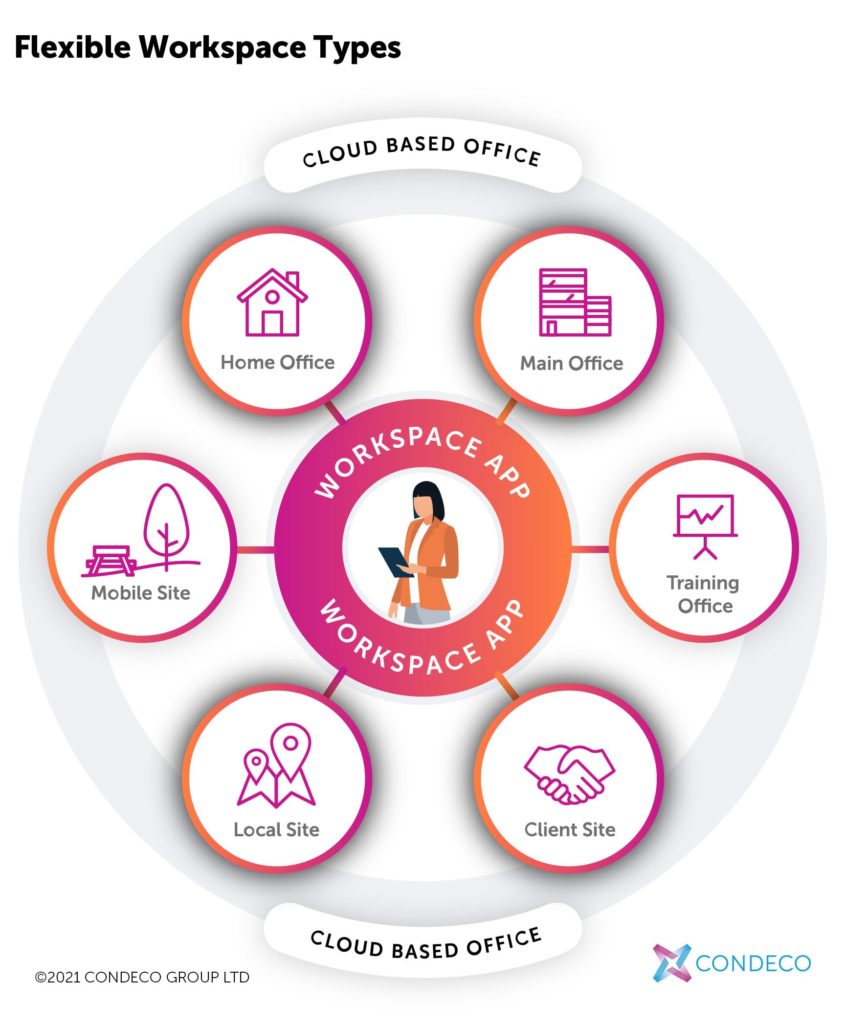
Flexible working is a continuously growing trend, with an increasing number of individuals in the UK embracing work arrangements that offer flexibility. By the end of 2020, more than 4 million people in the UK had jobs that allowed for flexible working practices. The rise of this trend was largely influenced by the Coronavirus pandemic, which compelled numerous individuals to work remotely from their homes. As restrictions gradually ease, flexible working is expected to remain prevalent in the post-Covid workplace. Understanding the definition of flexible working, its significance, and the process of requesting it, even if you currently do not have this option, is essential.
What is flexible working?
Flexible working refers to an arrangement agreed upon by employers and employees that provides workers with the freedom to choose where, when, and how they work. Various forms of flexible working exist, including:
- Part-time working: This is when an employee’s working hours are anything less than the company’s standard full-time contract.
- Job shares: When two or more people share a role.
- Term-time working: Great for parents, this allows employees to take paid or unpaid leave during school holidays.
- Flexitime: This allows a degree of flexibility as to when staff start and finish their working day. For example, they could choose to work 8-4, or 10-6 instead of the standard 9-5.
- Compressed hours: When someone works full-time hours over a shorter period, for example doing four longer days to make a four day week.
- Remote working: Where staff work from home, or from a different location like a coffee shop, or even from a holiday home.
Learn more about giving your employees more choice and control over where and when to work with flexible work.
Benefits of flexible working
As the name implies, flexible working allows employees a much greater degree of flexibility over their working hours and location. There are several potential benefits for both employers and staff.
A greater work-life balance
The ability to determine when and where to work greatly contributes to employees’ work-life balance. It fosters increased job satisfaction by eliminating the need for lengthy commutes, allowing individuals to utilize that time for personal activities such as exercise or spending quality time with loved ones. Parents and caregivers especially benefit from this arrangement as it facilitates better coordination with school drop-offs, pick-ups, and other responsibilities like medical appointments.
Flexible office space
 By empowering your people to work from anywhere you can unlock new ways of working and increase productivity, improve employee satisfaction, and save office costs.
By empowering your people to work from anywhere you can unlock new ways of working and increase productivity, improve employee satisfaction, and save office costs.
Advantages of flexible working
Flexible working provides employees with enhanced autonomy over their working hours and location, aligning with its descriptive name. This arrangement offers numerous potential benefits for both employers and staff, including:
- Improved work-life balance: The ability to determine when and where to work greatly contributes to employees’ work-life balance. It fosters increased job satisfaction by eliminating the need for lengthy commutes, allowing individuals to utilize that time for personal activities such as exercise or spending quality time with loved ones. Parents and caregivers especially benefit from this arrangement as it facilitates better coordination with school drop-offs, pick-ups, and other responsibilities like medical appointments.
- Increased productivity and motivation: Flexible working arrangements can boost employee productivity and motivation. By having the freedom to choose optimal working hours and a conducive environment, individuals can tailor their work schedule to align with their peak productivity levels. This results in more focused and efficient work, leading to enhanced overall performance.
- Reduced stress and improved mental well-being: The flexibility associated with flexible working can help reduce stress levels and promote better mental well-being. Employees experience reduced pressure from rigid schedules and the ability to create a work environment that suits their needs and preferences. This can contribute to higher job satisfaction and a healthier work-life integration.
- Enhanced recruitment and retention: Offering flexible working options can be an attractive factor for prospective employees and a valuable tool for retaining talented staff. It showcases a commitment to work-life balance and supports diverse needs, making the organization more appealing to a broader range of individuals. This can result in a competitive advantage in the job market and foster long-term employee loyalty.
- Cost savings and environmental benefits: Flexible working arrangements can lead to cost savings for both employers and employees. With reduced office space requirements, companies can optimize their resources and potentially save on overhead expenses. Additionally, employees can save on commuting costs and reduce their carbon footprint by minimizing travel.
Different types of places you can work could include:
- Home Office
- Main Office or Headquarters
- Training Office
- Client site or Customer office
- Local site or regional office
- Mobile site, such as a café, park or any non-fixed location
Additional benefits of flexible working
Reduced absenteeism and presenteeism
Flexible working can reduce absence rates as it can allow employees to better balance their workload with disabilities, mental health and long-term health conditions. It can also reduce incidences of presenteeism, where employees show up to work (because they feel like they have to) but aren’t fully focused on the job.
More accessible
Working from home, working fewer hours, or utilizing flextime can be hugely beneficial for employees with disabilities and long-term health conditions.
More choice for hiring managers
If an employer introduces flexible working practices, particularly remote working, they have access to a much wider talent pool, meaning they can hire the very best employees for each role regardless of location.
How to request flexible working
In the UK, all employees have a legal right to request flexible working, although they must have worked for the same employer for at least 26 weeks to be eligible.
Employees must make a ‘statutory application’ for flexible working, which must be in writing, and details of what they’re requesting, whether that’s part-time hours, flexitime or compressed hours.
Employers must respond within three months, and if they decline the request, they must give the reasons for doing so.
Creating flexible working spaces
For employers looking to create a flexible working environment, it’s important to have the right technology in place to get the best out of their employees. Find out more about creating flexible working spaces to maximise efficiency and productivity.



